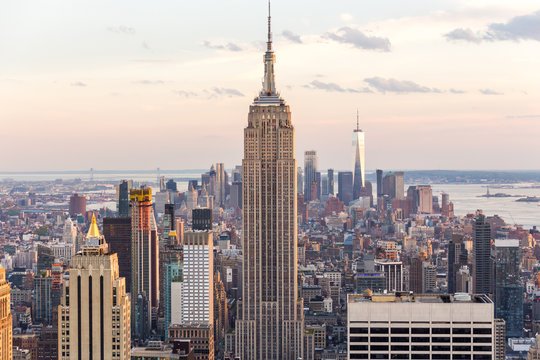The legendary building:
The Empire State Building, a towering sentinel over the New York City skyline, is more than just a skyscraper; it’s a symbol of American ingenuity, ambition, and resilience. Its history is a testament to the nation’s rapid industrialization, economic booms, and the enduring spirit of its people.
The dive into the past:
The 1920s, a decade marked by unprecedented economic prosperity and social change, witnessed a surge in skyscraper construction in New York City. The city’s skyline was transformed as developers raced to build taller and more impressive structures. The Woolworth Building, completed in 1913, had held the title of the world’s tallest building for nearly two decades. However, its reign was soon to be challenged.
In 1925, the Metropolitan Life Insurance Company announced plans to construct a towering skyscraper at the corner of 23rd Street and Fourth Avenue. The proposed building, to be named the Met Life Tower, was expected to surpass the Woolworth Building in height. This announcement ignited a competitive frenzy among developers, each vying to claim the title of the world’s tallest building.
The Empire State Building was conceived as a commercial office tower, designed to capitalize on the growing demand for office space in Midtown Manhattan. The project was spearheaded by the real estate tycoon John J. Raskob, who enlisted the architectural firm Shreve, Lamb, and Harmon to design the building. Construction began in 1929, just as the Great Depression was beginning to cast a shadow over the American economy.
Despite the economic downturn, construction continued at a feverish pace. The building was completed in just over a year, a remarkable feat considering its immense size and complexity. The Empire State Building stands at 1,454 feet tall, including a 222-foot antenna that was added in 1931. It remains one of the tallest buildings in the world, surpassed only by the Burj Khalifa in Dubai.
The beacon of hope:
The Empire State Building’s construction was a testament to the American spirit of perseverance and optimism. Even in the face of economic hardship, the project was completed, serving as a beacon of hope in a time of uncertainty. The building’s construction also showcased the ingenuity and technological advancements of the era.
The Empire State Building quickly became an iconic symbol of New York City and the United States. It was featured prominently in countless movies, television shows, and advertisements. The building’s observation deck, which opened to the public in 1931, offered visitors breathtaking views of the city and beyond.
Over the years, the Empire State Building has witnessed significant changes in the New York City skyline. The construction of the World Trade Center towers in the 1970s and 1980s briefly eclipsed the Empire State Building as the tallest building in the city. However, the tragic events of September 11, 2001, destroyed the World Trade Center towers, once again elevating the Empire State Building to a position of prominence.
Conclusion:
Today, the Empire State Building remains a beloved landmark and a testament to the enduring spirit of New York City. It is a symbol of American ingenuity, resilience, and the city’s unwavering determination to rise above adversity.












